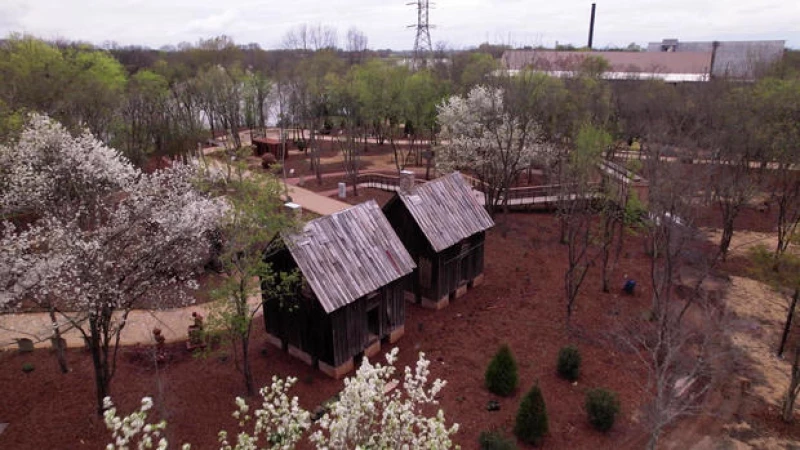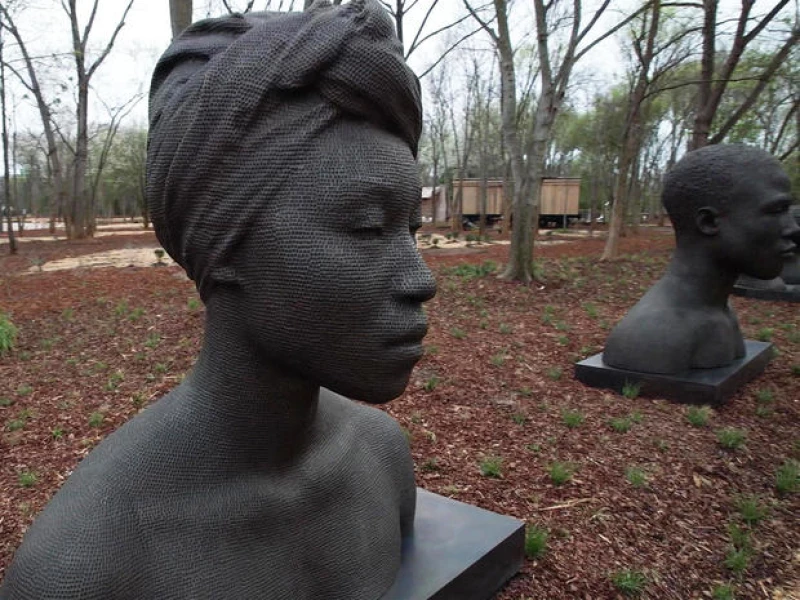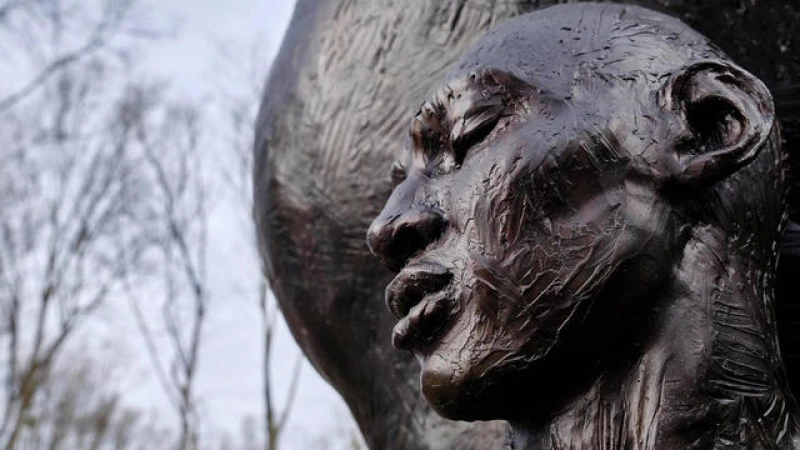In Montgomery, Alabama, wedged between a maze of train tracks and the river, a long-neglected plot of land has been transformed. It's now home to the Freedom Monument Sculpture Park, the vision of lawyer and social activist Bryan Stevenson.
The 17-acre park, set to open this month, is filled with nearly 50 sculptures by world-famous artists like Kehinde Wiley, Simone Leigh. and Kwame Akoto-Bamfo, collectively evoking the history of slavery in America. "Artists have the ability to depict the humanity and the dignity of people, even in the midst of something brutal and violent," said Stevenson. "It's a tough subject. It's a challenging subject. And we wanted to use art to help people manage the weight of this history and engage in a more complete way with the lives of enslaved people."

It's the latest project for Stevenson, founder and director of the Equal Justice Initiative (EJI), also based in Montgomery. For more than 30 years, Stevenson and his team have provided legal services to people on death row, to date helping overturn more than 140 convictions and sentences. He said understanding the racial injustices of the present begins by reckoning with the tortured legacy of the past.
"As they say, the truth can set us free," said Stevenson. "And I genuinely believe that there is something that feels more like freedom, more like equality, more like justice waiting for us in America. But I don't think we'll get there if we don't find the courage to talk honestly about our past."
Over the years, the EJI has expanded its mission, to build cultural sites in Montgomery, like the Legacy Museum, and the National Memorial for Peace and Justice, focusing on America's history of lynching.
Stevenson said, "There were 10 million people who were enslaved in this country, and much of what I hope we can do is honor those who struggled and suffered, and those who endured and persevered."
That begins by taking park visitors across the Alabama River, a route taken by tens of thousands of enslaved Africans.
"You'd see these boats with enslaved people chained in the bottom and docking, just a half-mile from here," he said, "and then there would be what enslaved people referred to as the weeping time, the time where they had to fear being separated from children, separated from spouses."
The park mixes artifacts of slavery, like 170-year-old plantation dwellings and a whipping post, with powerful works of artistic imagination.
"Strike," by artist Hank Willis Thomas, evokes violence and resistance. "I'm also thinking about peace and resolution," said Thomas. "In this case, the gesture of just stopping the brutality begins the opportunity for us to find peace."

Exploring the theme of resilience leads visitors down the path to the park's focal point: a 43-foot-tall monument, housing a plethora of names, all meticulously curated by Stevenson himself.
"These names were extracted from the 1870 census," he explained. "It marked a significant moment when formerly enslaved individuals could lay claim to a name officially recognized by the government, a name that would be etched into history."
"Many assume these names were handed down by their enslavers, but that's not entirely accurate, is it?" inquired Whitaker.
"No," Stevenson replied. "Only 40% of the adopted names had ties to an enslaver. The rest were chosen to preserve familial connections established during the plantation era – bonds between siblings, cousins, and kin. These names served as a unifying force."
The monument bears a total of 122,000 surnames, including Whitaker's own. "Incredible. It's truly profound. And spelled with just one T! These are my ancestors! The one-T Whitakers!"

Stevenson emphasized that both then and now, the towering memorial symbolizes the enduring hope for a brighter tomorrow: "We will persist in the fight for the freedom that you sacrificed for – that's the debt we owe to those who endured before us."
For more info:
- Visit the Freedom Monument Sculpture Park in Montgomery, Ala.
- Learn more about the Equal Justice Initiative
- Explore the National Memorial for Peace and Justice in Montgomery, Ala.
- Discover the works of Hank Willis Thomas
Story produced by Sara Kugel. Editor: Carol Ross.
See also:
- Bryan Stevenson on teaching history and the pursuit of justice ("Sunday Morning")
- Inside the memorial to victims of lynching ("60 Minutes")
- A Florida town, once settled by former slaves, now fights over "sacred land" ("Sunday Morning")
- "Master Slave Husband Wife": A startling tale of disguise to escape slavery ("Sunday Morning")
- "The Devil's Half Acre": How one enslaved woman left her mark on education ("Sunday Morning")
- A historical reckoning for the global slave trade ("Sunday Morning")
- The story of Juneteenth ("Sunday Morning")
- Bill Traylor: The imaginative art of a freed slave ("Sunday Morning")







